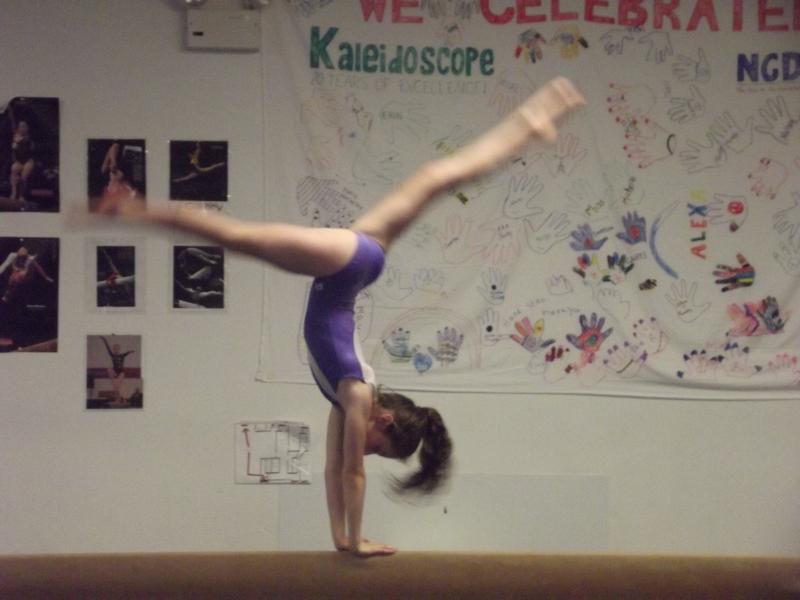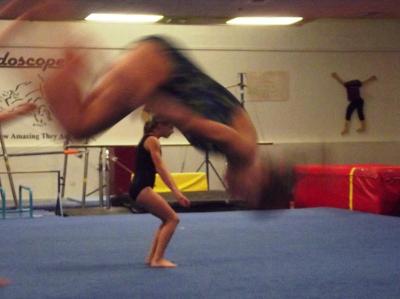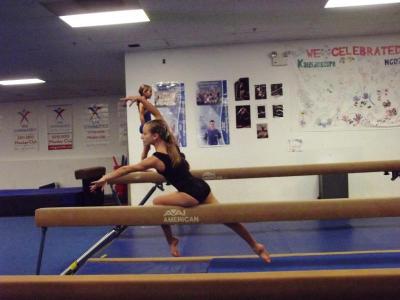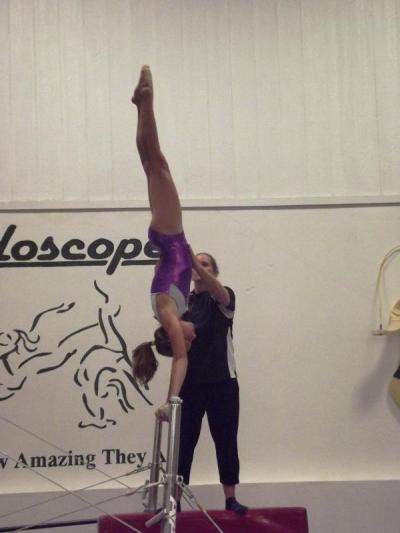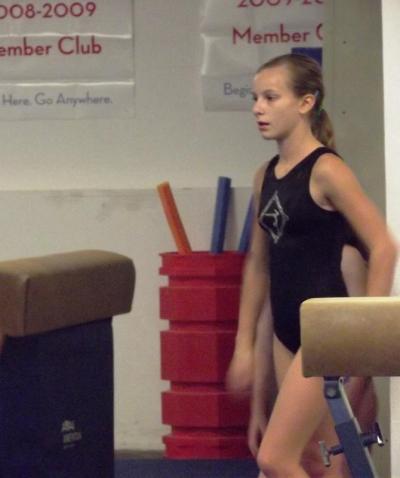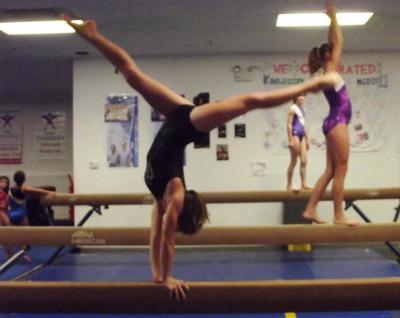Local gym gearing up for competition
Gymnastics isn't just a sport. It’s a lifestyle that involves hours of hard work, sore muscles, hands torn up from the bars, and a level of commitment generally unheard of in tweens.
Consider Alyson Stellato of Mattapoisett, a “Level 6” gymnast at Kaleidoscope School of Dance and Gymnastics. The sixth grader describes how she’s coping with the increased homework load of middle school: “I don’t even take my backpack off, I just run upstairs to do my homework.”
Then she heads to Wareham for three hours of gymnastics class.
Stellato and her teammates at Kaleidoscope are preparing for the competitive gymnastics season, which will culminate in a state competition in March. The race to state competition begins November 18, with Kaleidoscope’s first competition at Gym Hutt in Lakeville.
Last year, a number of girls represented Kaleidoscope at the state competition (or “states” for short), and that’s the goal for some this year. Other gymnasts are simply focused on improving their scores and nailing skills to move up a level.
Gymnasts are ranked into one of 10 levels, with 10 being just below "Elite," essentially Olympic, level.
Coach Carolyn Pruchnik says that the summer Olympics sparked an uptick in enrollment among beginner-level gymnasts. It certainly didn't hurt that Massachusetts native Aly Raisman competed with U.S. team and brought home both a team gold and an individual gold medal for her floor routine.
Ten-year-old Kate Erickson of Marion is competing as a Level 5 gymnast, and is gunning for states this year. “Last year I didn’t make it," Erickson explained.
Erickson said her ultimate goal is to make it to Level 10, and to someday coach gymnastics.
According to Head Coach Erin Bosanquet, the key traits that help a gymnast improve are attention to detail and resilience.
“They have to be so dedicated and so focused," she noted.
There are five girls competing at levels 5 and 6 this year, all of whom started the sport between 2 and 6 years old.
There are four events in women’s gymnastics: floor, balance beam, vault, and the uneven parallel bars. Each event requires a different skill set. Brute strength can make for powerful tumbling and vaulting, while grace and dance skills are essential for the floor and balance beam. The bars require an incredible amount of upper-body strength.
Laurenne Wilkinson of Marion is competing at Level 6 this year, after scoring her first 9.0 out of 10 at states as a "Level 5" last year.
“A good goal for me this year would be to get a 9.0 on each event,” she said.
Wilkinson’s favorite event is the balance beam. The beam is four feet off the ground and a mere four inches wide, making it a nightmare for some gymnasts – but not for Wilkinson.
“I’m usually not nervous about stuff,” she said with breezy confidence.
Level 5 gymnast Mia Hemphill of Marion is only 8 years old, and she has her sights set on advancing quickly.
“I want to get to Level 6 fast," she said. "This [level] is a little easy for me, even though there are a couple of things I need to work on.”
Middle school is usually when teachers start to really pile on the homework, making time-management almost as important as conditioning for the older girls.
Maxine Kellum of Mattapoisett, who is in the seventh grade and competes at Level 6, said some nights she’s up until 10:30 p.m. after practice finishing up homework.
Maxine, along with Stellato, competed at states at Level 5 last year. Alyson scored her first 9.0, and Maxine walked away with a fifth place finish in the all-around competition, and third place on bars.
During practice, Pruchnik shouts out a seemingly constant stream of corrections at her girls. No matter how good a gymnast is, there's always room for improvement.
Under the current rules, gymnasts perform compulsory routines through Level 6. This means each routine is the same. Optional routines are just what they sound like: The gymnast and coach collaborate to create routines that meet the difficulty guidelines for the level at which the gymnast is competing.
The work doesn’t end with the competitive season. Summers are spent working to master new skills that can allow a gymnast to compete at a higher level the following year.
“It’s a huge commitment. The kid has to be invested and the parents do, too,” said Pruchnik. “It’s not a season, it’s all year.”



